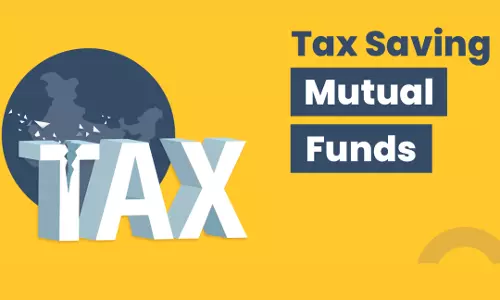While mutual funds help invest in your future goals, they also come with yearly perks, such as tax benefits. These provisions are available under Section 80C of the Income Tax Act. The few funds that offer this benefit are often referred to as tax-savings funds or Equity Linked Savings Schemes (ELSS).
ELSS funds allocate over 80% of their investments in equity and equity-related instruments. However, since most of the investment is in equity, they carry high risk with the potential for higher returns.
Today, there are different ELSS funds available in the market with a few that stand out as the best tax-saving mutual funds. Read on to learn about some of the top ELSS funds you could consider investing in.
Mirae Asset Tax Saver Fund-Direct Plan-Growth
With NIFTY 500 TRI as the benchmark index and a 5-star CRISIL rating, the 3-year return of this scheme is 26.64%. The AUM of the fund is over ₹15,500 Crores, and the NAV as of 10th July 2023 was ₹37.81.
This scheme has over 30% of its investments in the financial sector and nearly 25% in the ‘others’ sector. The minimum SIP and lumpsum amount for this fund is ₹500. Its expense ratio is 0.50%.
Quant Tax Plan – Growth Option – Direct Plan
With a 5-star CRISIL rating, this fund’s benchmark index is NIFTY 500 TRI. The AUM of the fund is over ₹3,500 Crores, and its NAV as of 10th July 2023 was ₹280.46. The fund’s 3-year return stands at 42.27%.
The fund has around 20% of its investments in the financial sector and over 15% in the construction sector. The minimum SIP and lumpsum amount to invest in this scheme is ₹500. Its expense ratio is 0.57%.
Canara Robeco Equity Tax Saver Fund – Direct Plan – Growth Option
This scheme has investments in primary and secondary markets as well as overseas equity markets. It has a 4-star CRISIL rating with S&P BSE 500 TRI as the benchmark index. The AUM of the fund is over ₹5,000 Crores, and its NAV as of 10th July 2023 was ₹138.29.
The fund’s return for 3 years is 26.36%. It makes over 30% of its investments in the financial sector and more than 25% in the ‘others’ sector. The minimum SIP and lumpsum investment amount for this scheme is ₹500, and the fund’s expense ratio is 0.53%.
PGIM India Elss Tax Saver Fund – Direct Plan – Growth Option
With a 4-star CRISIL rating, the fund’s benchmark index is NIFTY 500 TRI, and its AUM is over ₹500 Crores. The scheme’s NAV as of 10th July 2023 was ₹29.76, and its 3-year return is 27.76%, making it a good choice.
The fund has over 30% of its investments in the financial sector and more than 25% in the ‘others’ sector. This scheme’s expense ratio is 0.96%, with a minimum SIP and lumpsum investment amount of ₹500.
DSP Tax Saver Fund – Direct Plan – Growth
With NIFTY 500 TRI as the benchmark index, the fund has a 4-star CRISIL rating. The AUM of the scheme is over ₹11,000 Crores, and its NAV as of 10th July 2023 was ₹98.70. Its 3-year return presently stands at 26.27%.
Over 30% of the fund’s investments lie in the financial sector with more than 20% in the ‘others’ sector. The minimum SIP and lumpsum investment is ₹500, and the expense ratio of the fund is 0.78%.
Bandhan Tax Advantage (ELSS) Fund-Direct Plan-Growth
This scheme has a CRISIL rating of 4 stars with S&P BSE 500 TRI as the benchmark index. The AUM of the fund is over ₹4,500 Crores, and the NAV as of 10th July 2023 was ₹126.67. Its 3-year return is 33.96% with the minimum investment amount standing at ₹500.
Additionally, the expense ratio of the scheme is 0.74%. The top holdings of the fund are in the ‘others’ sector at over 30%, with an investment of more than 20% in the financial sector.
Mahindra Manulife ELSS Fund Direct-Growth
Previously known as Mahindra Manulife ELSS Kar Bachat Yojana Dir-G, the benchmark index for this fund is NIFTY 500 TRI. The AUM of the fund is over ₹630 Crores, and its NAV as of 10th July 2023 was ₹23.98.
This fund’s investment allocation is almost 30% in the financial sector and nearly 10% in the technology sector. The 3-year return for the scheme is 28.1%, and the minimum investment amount is ₹500 for SIPs and ₹1,000 for lumpsum investments. Its expense ratio is 0.69%
Kotak Tax Saver-Scheme-Growth – Direct
The benchmark index for this scheme is NIFTY 500 TRI, and it has a CRISIL rating of 5 stars. The AUM of the scheme is over ₹3,500 Crores, and its NAV as of 10th July 2023 was ₹94.78.
Its 3-year return is 26.93% against the category average of 34.86%. The top sector allocation of the scheme is the ‘others’ segment, with an investment of over 29%. Meanwhile, in the financial sector, it has invested about 26.39%.
The minimum SIP and lumpsum investment requirement in the scheme is ₹500, and its expense ratio is 0.60%.
Tata India Tax Savings Fund-Growth-Direct Plan
With a 3-star CRISIL rating, the scheme holds NIFTY 500 TRI as the benchmark index. The AUM of the fund is over ₹3,000 Crores, and the NAV as of 10th July 2023 was ₹35.20%. The 3-year return from this scheme is 25.12%.
This scheme’s investment allocation is about 80% in equity with up to 20% in debt and money-market instruments. The financial sector tops its holdings, standing at an investment of over 30%. It has an investment of more than 25% in the ‘others’ sector as well. The minimum investment amount of the scheme is ₹500, and the expense ratio is 0.77%.
*Disclaimer: The funds listed above are not ranked in any particular order. The schemes and data are purely intended for informational purposes. Mutual funds are subject to market risks and investors are advised to read all documents related to the scheme before investing.
Before investing in any mutual fund scheme, it is crucial to consider your risk appetite and goals. This is because the risk level and investment horizon can vary across ELSS funds.
It is also important to remember that these mutual funds are predominantly equity-based and therefore, carry a higher risk. As such, if you have a low-risk appetite, you can look for other schemes such as multicap mutual funds that have a comparatively lower risk.
https://thelogicalindian.com/h-upload/2023/07/27/500x300_232719-untitled-design-13.webp
Finance
2023-07-29 10:13:24.0
Tax-Saving Mutual Funds for Beginners











